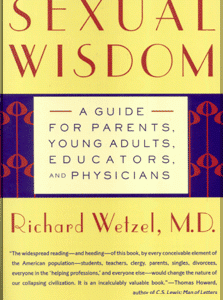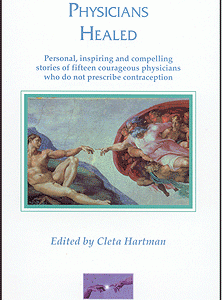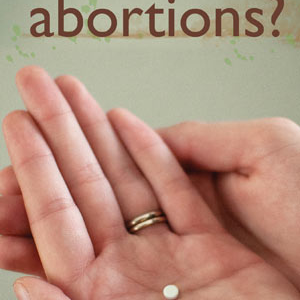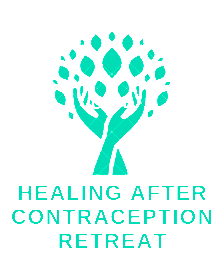 March 4, 2015 (LifeSiteNews.com) — Although there has always been contraception, its acceptance and practice by society as a whole is a relatively new phenomenon. In the first part of the 20th century barrier methods became through mass production increasingly used. However, with the advent of the hormonal contraceptive pill in the 1960s the contraceptive era, ushering in the sexual revolution, really took off.
March 4, 2015 (LifeSiteNews.com) — Although there has always been contraception, its acceptance and practice by society as a whole is a relatively new phenomenon. In the first part of the 20th century barrier methods became through mass production increasingly used. However, with the advent of the hormonal contraceptive pill in the 1960s the contraceptive era, ushering in the sexual revolution, really took off.
The term “revolution” is by no means exaggerated, for the result was a fundamental change in the understanding of human sexuality in society. With the pill, people thought, nothing can happen, i.e. no child could be conceived. Inhibitions broke down, so that there was an increase in adultery, living together before marriage and living together with no thought of marriage. Amoral sex education with the message, “You can do anything you like so long as your partner agrees and you use contraception. If there is an accident, have an abortion,” promoted sexual promiscuity from puberty onwards. Sexual activity has been degraded into a form of entertainment.
The immediate consequences of promiscuity starting in adolescence are obvious: the rampant increase of sexually transmitted diseases, infertility and the incapability of forming long-term relationships through frequent changes of partners and repeated disappointments.
The assumption that “nothing can happen” is erroneous, because contraceptives are by no means 100% effective. Children are conceived, and such “errors” must be corrected – the child is aborted.[1] The result has been devastating: the number of babies killed by abortion every year is about the same as the total number of deaths in the whole of World War II.
Apart from the carnage, enormous havoc is created in the relationship of the parents, whether married or not, very often leading to its breakdown. It would also be naive to imagine that Catholic women never resort to abortion.
The situation of couples practising NFP however is quite different. They are aware every day of the state of their fertility, asking themselves whether the marriage act on that day would result in conception; they do not lose sight of the child who could be conceived. They do not forget the fundamental purpose of the act. An unplanned child is therefore usually accepted.
The widespread practice of abortion leads to euthanasia. If it is acceptable to kill one category of people, then it is logically acceptable to kill others, specifically the ill, the handicapped and the old, for human life is no longer sacred. A chilling example of this kind of development can be seen in the National Socialist regime in Germany.
The pill “culture” leads to the rejection of children, small families, and a demographic winter. In the long-term it will be impossible to pay pensions. For couples practising NFP however, the child is neither an error nor a threat. Their natural love of children is not destroyed. They have larger families. The 15 teaching couples in our organisation, for example, have 62 children so far, an average of 4.1 per family.
The separation of sexual activity from child-bearing leads to the acceptance of the production of children through assisted reproduction without recourse to the marital act in the case of infertility. Through IVF society is being led, inspired by Aldous Huxley’s Brave New World, to the acceptance of controlled reproduction. Human beings are reduced to products. They are mass produced, selected, rejected, frozen or used in experiments. They are treated as material goods, in short, as slaves.
Slavery has been formally reintroduced into society. A doctor, whether mixing sperm and eggs in a Petri dish or injecting a sperm into an egg, is playing God. The arrogance of it! Surely this modern sin should be listed amongst those which cry to heaven.
When the practice of sterilised sexual intercourse is accepted, it leads logically to the acceptance of all practices leading to orgasm: oral, anal, homosexual acts, etc. The whole homosexual movement has become possible only through the general acceptance of contraceptive practice and the reduction of sexuality to a source of entertainment.
The practice of contraception within marriage contains within itself the mutual rejection of the spouses. It leads to the destruction of love. It belongs to the nature of love to give oneself, even to the point of sacrifice, seen eminently in the self-sacrifice of Christ on the cross. Even in our ordinary life a mother’s sacrifice of herself for her child is by no means exceptional. A mother will naturally go to great lengths to help her child, exceptionally even giving up her own life. The marriage act is meant to be an act of mutual love. The natural fruit of that love is the child. The spouses give and receive each other mutually completely. Even during the naturally infertile days of the cycle they give each other all they have at that time – their mutual love.
But if they use contraception they say to each other subconsciously, “I do give myself to you, but without my fertility, and I don’t want your fertility either.” Is that love? The act which in its nature expresses the total self-giving and receiving of the spouses contains an element of rejection, and therefore becomes a lie. When this act of rejection is systematically and continually repeated, love dies. The marriage is at least burdened. Many marriages break down.
Couples who use NFP do not practise this subconscious, systematic rejection. From personal experience and observation of our clients we see that such marriages are more stable. This is also shown in studies. Greater stability is evident even in those without religious practice. [2]
Contraception, which leads logically to other evils as described above, is destroying society. There are too few children and nations are dying out. It leads to abortion, as those who promote it concede. The combination of promoting promiscuity through Godless sex education, the long-term use of hormonal contraception with back-up abortions and the postponement of child-bearing leads to increased infertility.
The solution offered is not a true therapy of infertility, but assisted reproduction which bypasses the normal process of transmission of life through the marriage act. The long-term purpose of this policy could well be the desire to subject reproduction to state control, which would allow only those children to be born who pass quality control. At present this is illusory, but the tendency can be seen. It would appear that an elite group wishes to create a society of virtual slaves obedient to their desires. A new totalitarianism is being formed.
To this end it is necessary to destroy or at least weaken marriage and the family. For this purpose contraception, especially the convenient hormonal forms, is eminently suitable. And those who pour their millions into the homosexual movement and the gender ideology are not concerned with helping homosexuals and those with problems of sexual identity. Rather they are using these people to extend the concept of marriage and ultimately to widen its meaning so much as to make it meaningless.
[1] Baklinski, P, Two-thirds of women seeking abortions were using contraception: Britain’s largest abortion provider, http://www.lifesitenews.com/news/two-thirds-of-women-seeking-abortions-were-using-contraception-britains-lar
[2] Wilson, M.A.: The Practice of Natural Family Planning versu the Use of Artificial Birth Control: Family, Sexual and Moral Issues, Catholic Social Sceince Review, Volume VII, November 2002.
Rhomberg, W., Rhomberg, M, Weißenbach, H.: Natural Family Planning (NFP): The Symptothermal Method (Rötzer) as a Familiy Binding Tool. Results of a Survey among Members of INER, 2008, http://www.iner.org/files/02_anwenden/Download/NER%20Survey%202008%20Cathol%20Soc%20Sci%20Rev.pdf




 Twenty years ago this month, on the solemnity of the Annunciation, St. John Paul II published Evangelium Vitae (The Gospel of Life). It was the 17th year of his pontificate. He was 75 years old.
Twenty years ago this month, on the solemnity of the Annunciation, St. John Paul II published Evangelium Vitae (The Gospel of Life). It was the 17th year of his pontificate. He was 75 years old.








University of Hawaii Recruits Minors for Abortion Bleeding Experiment
March 31, 2015 By Operation Rescue
Honolulu, HI — The University of Hawaii is recruiting patients as young as 14 for second-trimester abortions to determine how much they bleed during the procedure. The controversial study is already underway at the Kapiolani Medical Center in Honolulu, led by Bliss Kaneshiro, MD and Kate Whitehouse, DO.
In the randomized trial, researchers experiment by either providing or denying intravenous oxytocin to abortion patients. Oxytocin is commonly used to minimize blood loss and decrease the risk of hemorrhage. However, some doctors are concerned that denying oxytocin during surgery may put patients, especially teen girls, at risk.
“This study is reminiscent of Nazi concentration camp experiments. I pity the poor women who are being treated like lab rats, especially those who are denied the drug to reduce hemorrhaging,” said Troy Newman, President of Operation Rescue. “I have read too many autopsy reports of women who bled to death during abortions to think this is anything but immoral and ghoulish.”
The abortion study is entitled “Effects of Oxytocin on Bleeding Outcomes During Dilation and Evacuation.” Abortion patients must be from 18-24 weeks gestation and from 14-50 years old. Researchers will measure how much each patient bleeds during her abortion, based on whether or not intravenous oxytocin is provided to her.
Dilation and evacuation abortions are grisly 2-3 day procedures that involve dismembering the pre-born baby with forceps and other instruments in order to remove him or her from the womb.
The study is still seeking up to 166 test subjects and is expected to conclude in July 2015. So far no study results have been released.
In a flyer recruiting a research associate to assist with the study, one of the “Factors for Success” in the position was “Comfort with observation of surgical procedures and abortion-related healthcare.” In other words, the applicant must be comfortable watching dismemberment abortions. (Click to view a dismemberment abortion. Warning, extremely graphic content.)
The University of Hawaii has done little to publicize the hospital-based abortions outside the medical community, perhaps fearing a public backlash. The Kapiolani Medical Center for Women and Children, where the abortion study is based, does not advertise abortions on its website.
“Abortionists are continually conducting abortion experimentation on women. That’s how the D&E abortion process and other abortion methods were invented, for example,” said Newman. “It is appalling to read the details of this particular experiment especially considering that they are using test subjects as young as 14 years old. It’s just heartbreaking.”
The study is being done by the University of Hawaii in collaboration with Society of Family Planning and the University of Washington.
The Society of Family Planning provides millions of dollars in grant money for abortion and contraception-related studies. Other example of studies funded by the Society of Family Planning include:
“We completely oppose this gruesome abortion experimentation on women, especially minor girls who cannot legally give their consent,” said Newman. “Abortion experimentation is something that should have gone out with Josef Mengle. It has no place in a civilized, compassionate society. Those that really want to help women should put their efforts into ending abortion, not inventing new grisly ways to kill babies and exploit women.”
Posted in News & Commentary | No Comments »